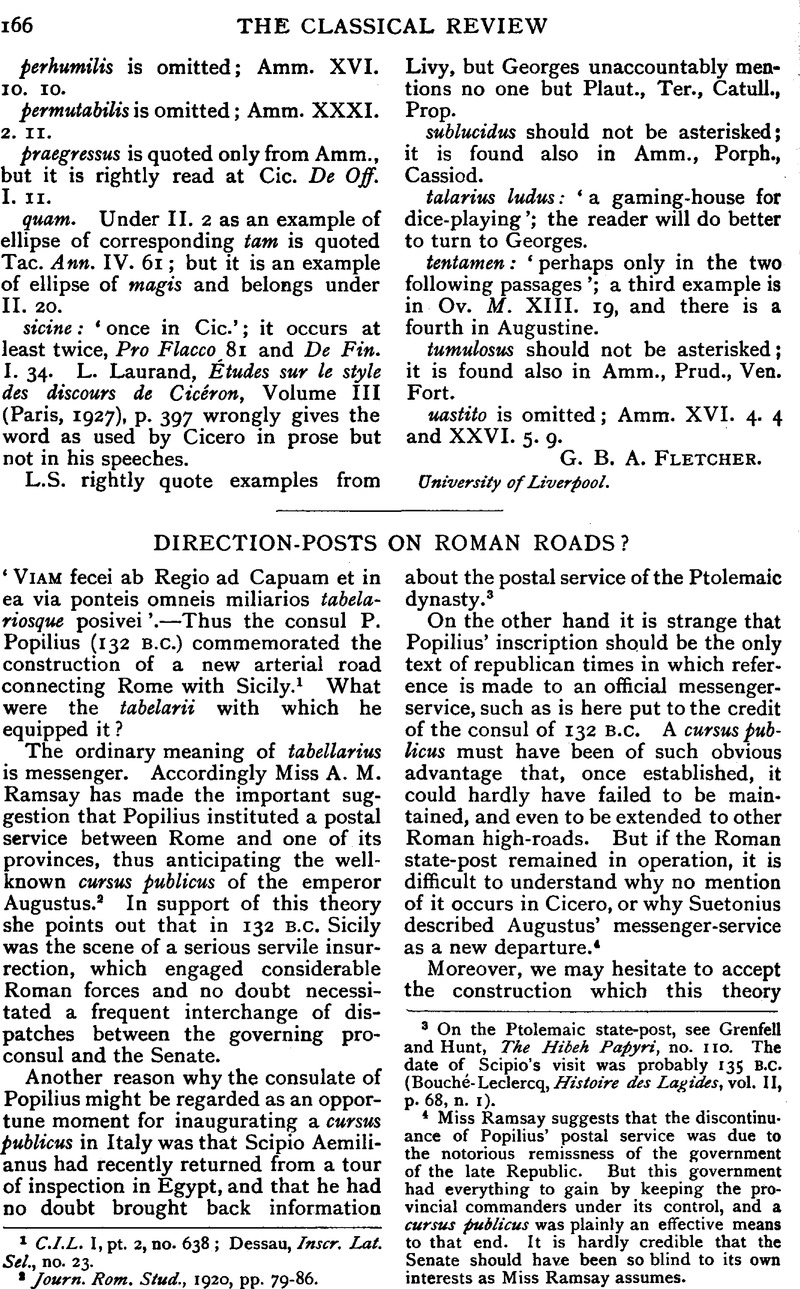No CrossRef data available.
Article contents
Direction-Posts on Roman Roads?
Published online by Cambridge University Press: 27 October 2009
Abstract

- Type
- Review Article
- Information
- Copyright
- Copyright © The Classical Association 1936
References
page 166 note 1 C.I.L. I, pt. 2, no. 638 ; Dessau, Inscr. Lat. Sel., no. 23.
page 166 note 2 Journ. Rom. Stud., 1920, pp. 79–86.
page 166 note 3 On the Ptolemaic state-post, see Grenfell and Hunt, The Hibeh Papyri, no. 110. The date of Scipio's visit was probably 135 B.C. (Boudaé-Lecleicq, Histoire des Lagides, II, p. 68, n. 1).
page 166 note 4 Miss Ramsay suggests that the discontinuance of Popilius' postal service was due to the notorious remissness of the government of the late Republic. But this government had everything to gain by keeping the provincial commanders under its control, and a cursus publicus was plainly an effective means to that end. It is hardly credible that the Senate should have been so blind to its own interests as Miss Ramsay assumes.
page 167 note 1 Kleine Schriften, pp. 708–9.
page 167 note 2 XV. 1. 50, p. 708 (on the authority of Megasthenes, an eye-witness).
page 167 note 3 It is conceivable that Chandragupta's σιλαι became known to the Mediterranean world through the medium of the Hellenistic Greeks, among whom Megasthenes found many readers. But the Romans were quite capable of inventing direction-posts for themselves.




